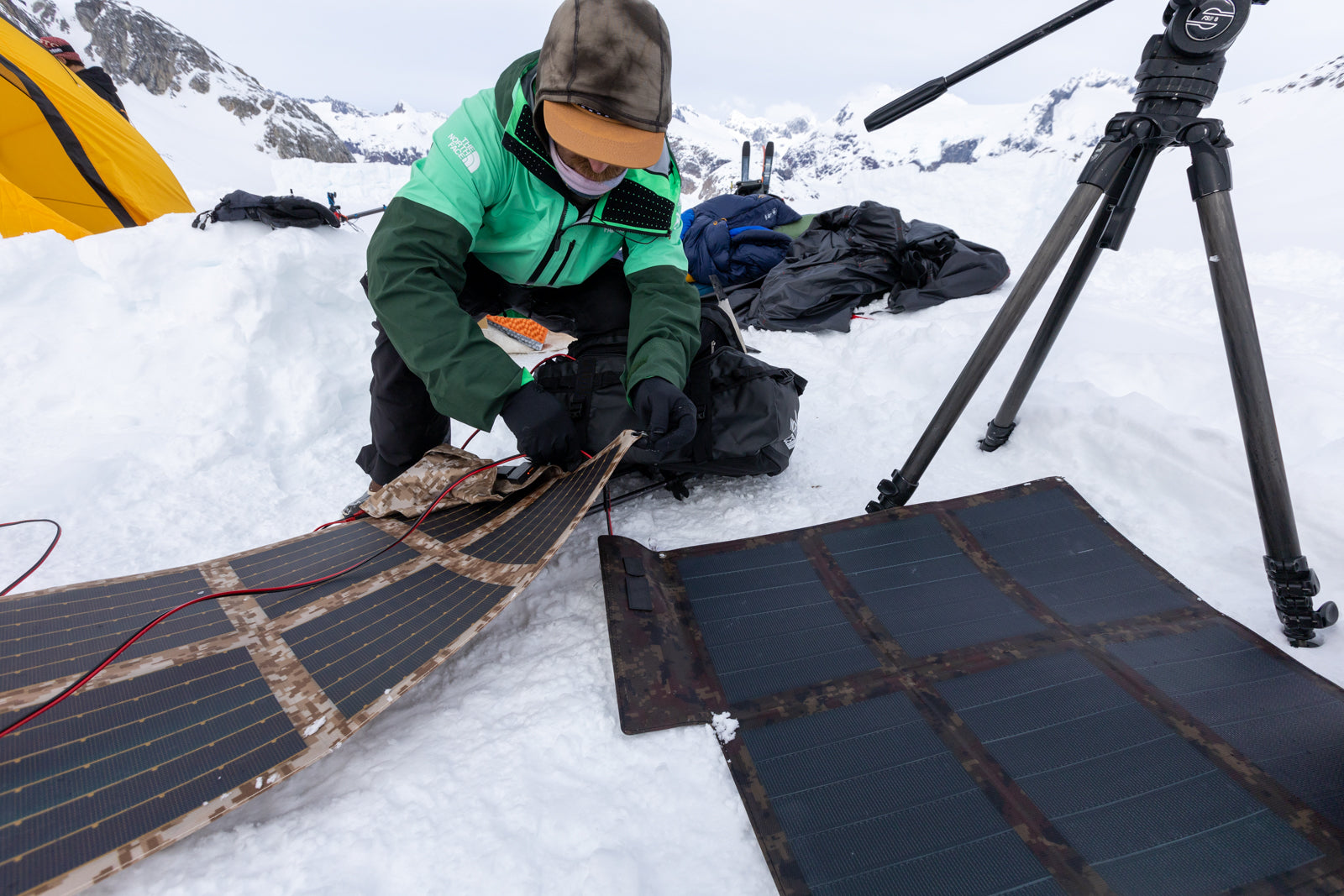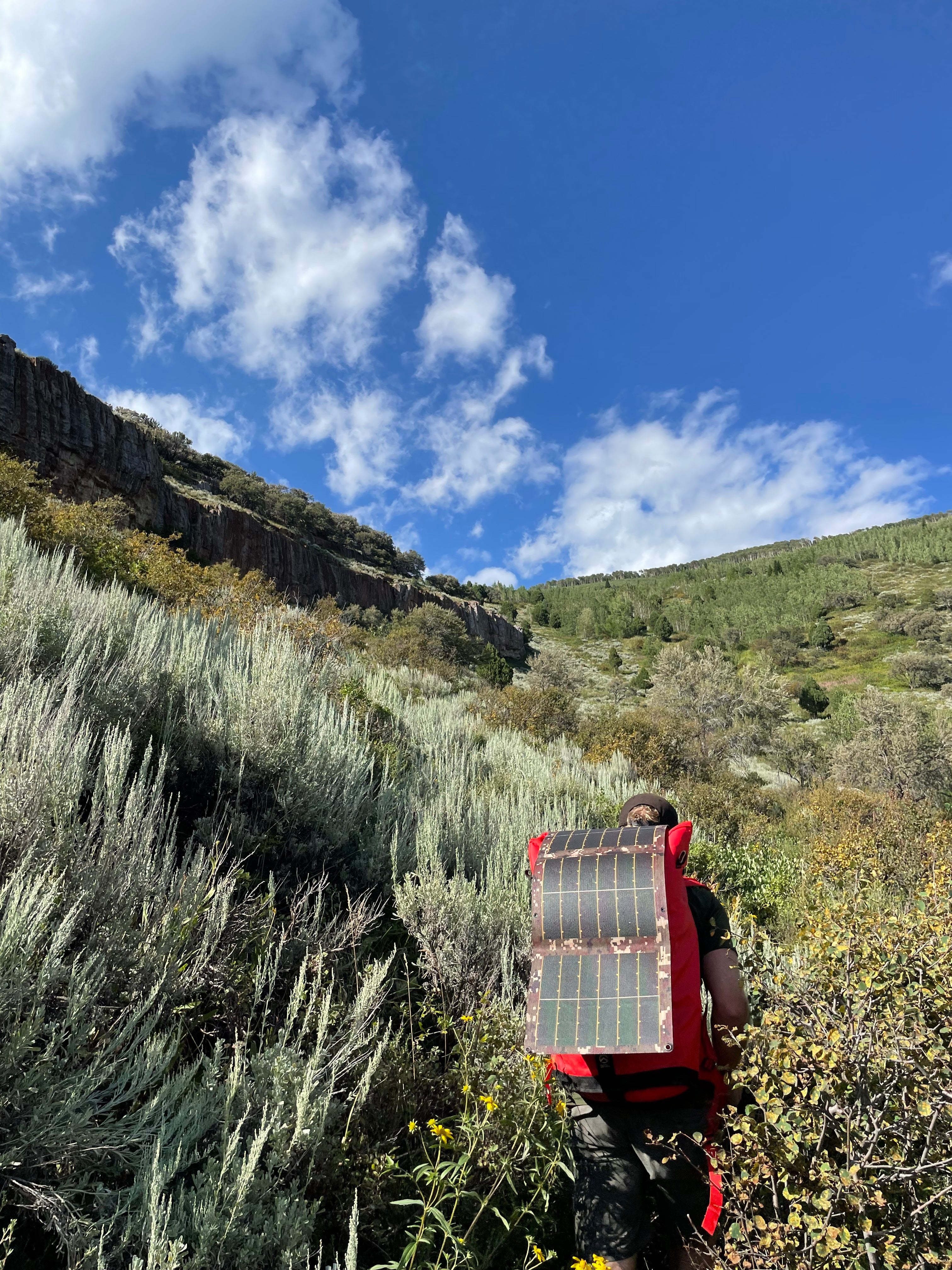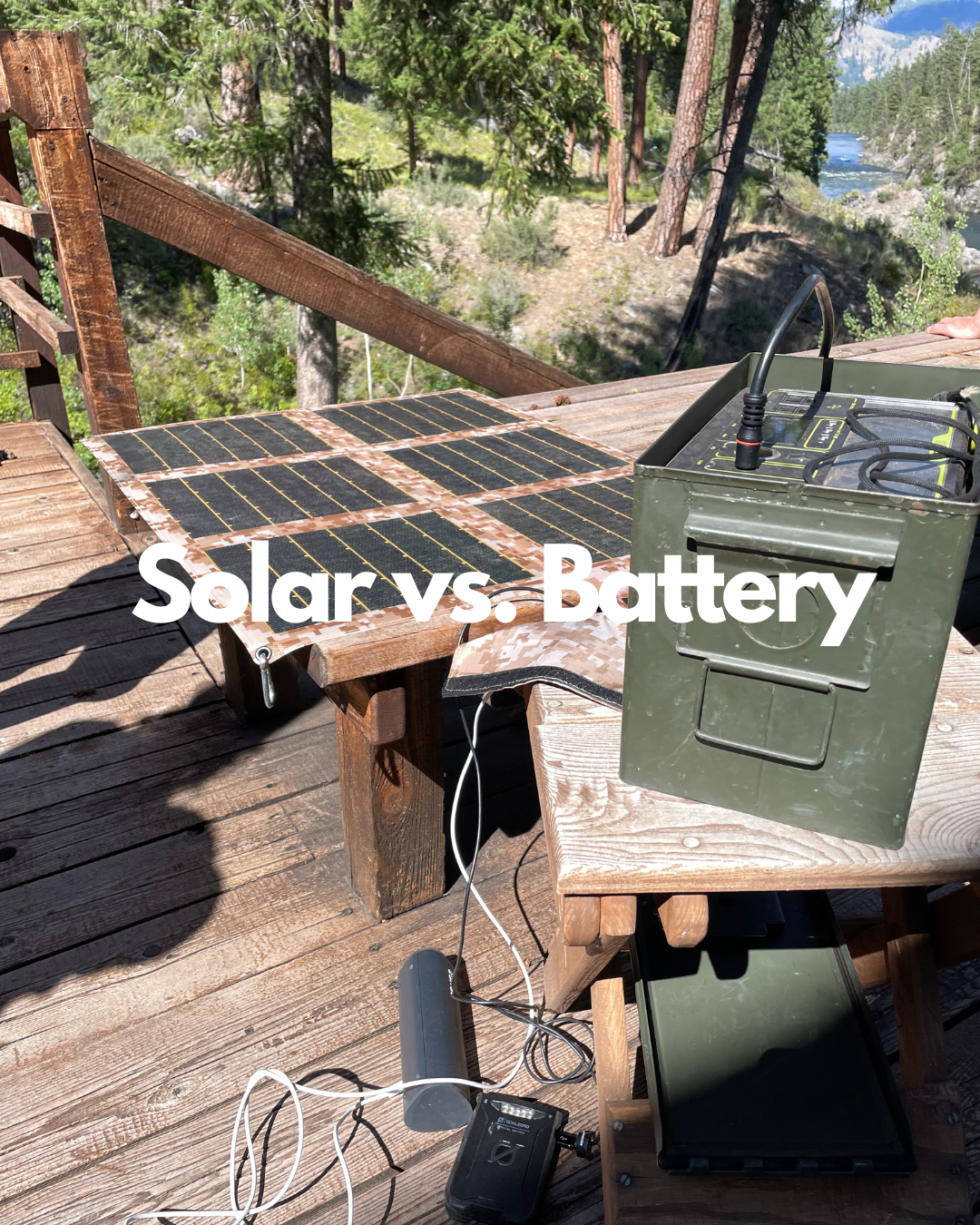Will it charge my _______?

We get it, power specifications can be tricky. The short answer is yes, if it has a USB port you can charge your device from one of our solar panels. The long answer (and how fast your device will charge) really depends on the particular device, what input it’s rated for and even the cable that you’re using.
Power basics:
First off, a little electricity refresher: watts = volts x amps. Our panels typically have an open circuit voltage of 18V and 12V at the SAE connection. USB ports (with the exception of USB PD) have a voltage 5V but will change the amps depending on what the device needs—yes, the device talks to the USB port based on power requirements. USB PD ports are capable of delivering much higher power outputs due higher voltage and amperage.
Battery basics:
Most devices will have a battery that’s measured in either watt hours (Wh) or milliamp hours (mAh) written in the fine print somewhere on the outside of the unit. For instance, most newer iPhones have a battery capacity of 10-15 Wh (we’ll use Wh for ease of calculating charging time). A watt hour is—you guessed it—a unit representing one watt for one hour. So, to fully charge a 15 Wh battery you’d need 15W of solar power going to your phone for one hour. Pretty simple, right?
So, a bigger panel will charge my device faster, right?
That’s a hard…maybe. Just because a panel is producing more watts doesn’t mean the device can handle all of that power. Older USB devices can only receive 2.5W while newer USB PD devices can receive up to 100W, it all depends on how your device is wired. That said, a bigger panel will generate more power during low light conditions, making it more likely that your device will receive the maximum power it can handle.
My device has a USB C port, that means it charges fast, right?
Nope. While USB-C ports are capable of a lot, your device with a USB C port only guarantees that you won’t have to flip around the cable because it’s upside down. While in all likelihood it will charge faster than traditional USB ports, a USB C input does not guarantee that. More indicative of how quickly your device will charge is the cord it comes with: if it’s USB-C to USB-C yes, it’s likely to charge more quickly. If it’s a regular USB cable on one and and USB-C on the other it probably won’t charge significantly faster—if at all faster—than older port types.
Is it possible to overcharge my device if there’s too much sunlight?
No, the solar panel controller and the device being charged will communicate with each other to determine the appropriate amount of volts and watts.
How do I get the most out of my panel?
Charging a power bank with a solar DC input such as an 8mm barrel connector, DC5521 or Anderson Power Poles ensures you get every watt that your panel is producing. Also, this allows you to store your power for later use on whichever device may be running low. That said, for the majority of recreation applications our USB ports have you covered.
Still have questions? Feel free to drop us a line here.



